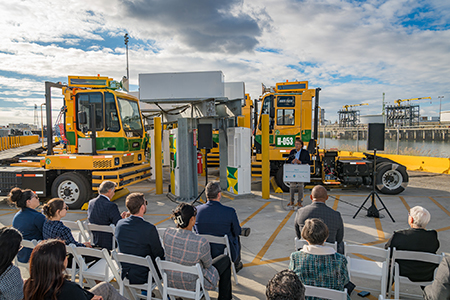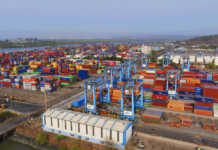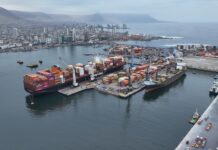
A fleet of 33 new human-operated, zero-emissions battery-electric yard tractors was officially presented on 29 November at a Port of Long Beach container terminal, where the cargo-handling machines have replaced traditional gasoline and diesel-powered models.
The terminal operator SSA Terminals LLC, a joint venture between SSA Marine and Matson Navigation Company, led the deployment, which was the largest of its kind on the United States West Coast.
“Meeting our aggressive zero-emissions goals is not possible without the support of our partners, and this project is just another example of the shared commitment at the Port of Long Beach to a zero-emissions future,” stated Mario Cordero, CEO of Port of Long Beach.
The new port equipment project is supported in part by a US$50 million grant from the California Air Resources Board for the Sustainable Terminals Accelerating Regional Transformation, or START project, which is a large-scale, transformative demonstration of a near-zero and zero-emissions supply chain.
Furthermore, the START project is part of California Climate Investments, a statewide effort that invests billions of dollars in cap-and-trade funds to decrease greenhouse gas emissions while boosting the economy and improving public health and the environment – particularly in disadvantaged communities.
Additional funding for the equipment was provided by a US Environmental Protection Agency Targeted Airshed Grant.
The new machines bring the ratio of zero-emissions equipment at the Port of Long Beach to around 20%. As additional zero-emissions equipment is installed at the Port, the proportion will rise.
This equipment also speeds Pier C’s transition to zero-emissions operations, a process that will continue when SSA Terminals integrates zero-emissions, human-driven top handlers.
To make the concept a reality, SSA Terminals is working closely with equipment manufacturers to construct machinery and infrastructure that could endure the demands of a full workday on the docks. With a once-per-day opportunity charge, the equipment may perform a two-shift operation.
“This project is exciting, and we commend all parties involved for balancing the need for zero-emissions technology and infrastructure while bolstering the efficient movement of cargo by the hardworking dockworkers,” stated Bonnie Lowenthal, vice president of Long Beach Harbor Commission.




